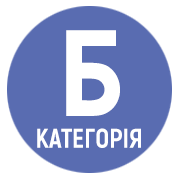ЗБРОЙНЕ НАСИЛЛЯ ТА ФОРМУВАННЯ ОБРАЗУ ВОРОГА В КОНТЕКСТІ РОСІЙСЬКОЇ АГРЕСІЇ
DOI:
https://doi.org/10.32689/2523-4625-2023-2(68)-6Ключові слова:
збройне насилля, образ ворога, механізм формування образу ворога, російсько-українська війнаАнотація
В статті досліджується взаємозв’язок між збройним насиллям та формуванням образу ворога, аналізуючи механізм останнього в контексті російської агресії. З початком російсько-української війни в 2014 р. російська пропаганда докладає зусиль для виправдання агресивних дій та формування негативного уявлення про Україну, її народ, владу, збройні сили тощо. У офіційній пропаганді для позначення ворога росія використовує мовні одиниці з переважно негативними інтонаціями. Це включає в себе терміни, які сприяють формуванню «мови ворожнечі» або «дискурсу ненависті». Ці вербальні засоби мають мету дискредитувати українську сторону та створити у власному суспільстві враження, що Україна є загрозою для безпеки і національних інтересів росії. У процесі формування образу ворога з України, російська пропаганда активно використовує підсилення наявних стереотипів, які можуть виникнути на основі історичних, культурних, або етнічних відмінностей між Росією та Україною. Цей засіб поряд зі міфілогізацією є ефективним інструментом для втілення ідей пропаганди в масову свідомість, оскільки вже існуючі уявлення важливо лише посилити. На сьогодні росія сформувала низку стереотипів і міфів щодо України, які використовує для формування образу ворога: отожнення Русі та росії; історична єдність росіян та українців; існування «справжніх, правильних» українців, які прагнуть до союзу з росією, інші з «неонацисти»; «російськомовні» потребують захисту росії і в. путіна. Продуктування міфів росіською пропагандою пов’язано зі процесом фальсифікації історії. Росія формує образ ворога з української держави і народу за допомогою такої маніпулятивної технології як повна дегуманізація опонента, стирання «людського обличчя». Відповідно образ конструюється на негуманістичних основах, де людина знижується до рівня біологічної сутності або навіть тварини, що призводить до недостатньої поваги та ненависті до ворожої групи через створення стереотипів та перекручення характеристик, а насилля і жорстокість стають виправданням боротьби за існування. Механізм формування росією образу ворога з України – це конструювання універсальної матриці переконань, що інституціоналізує процес репродукції ворожості з метою виправдання втручання у внутрішні справи української держави, а також застосування насильницьких заходів щодо демонізованих груп. Сформований в свідомості російського населення образ ворога з України глибоко вплинув на сприйняття подій російсько-української війни та створив підґрунтя для підтримки агресивних дій та жорстокості російської армії з боку власного суспільства.
Посилання
Гауфман Є. Політичні і правові аспекти образу ворога. Філософія права і загальна теорія права. № 1–2/2016. С. 76–90. URL: http://phtl.nlu.edu.ua/issue/view/11000.
Левченко Л., Ракчеєва С. Технології формування образу зовнішнього ворога у демократичних та недемократичних режимах. Наукові праці Чорноморського державного університету імені Петра Могили комплексу «Києво-Могилянська академія». Сер: Політологія. 2016. Т. 273, Вип. 261. С. 74–78. URL: http://nbuv.gov.ua/UJRN/Npchdupol_2016_273_261_16.
Bader, A., Zhurba, I., Kladko, A., Demchenko, V., & Rusanova, M. (2023). War in the practice of functioning of different types of political systems. Amazonia Investiga. 12(64), 331–339.
Науково-дослідний центр гуманітарних проблем Збройних Сил України. Формування російськими засобами масової інформації образу ворога з України. URL: https://www.facebook.com/NDCGPZSU/posts/691099101006356/.
Олексієнко С., Андрощук О. Психологічні особливості формування образу ворога як складової гібридної війни Російської Федерації проти України. Зб-к наукових праць Національної академії Державної прикордонної служби України. Сер: Психологічні науки. 2019. № 2. С. 182–198. URL: http://nbuv.gov.ua/UJRN/znpnapv_pn_2019_2_15.
Савва М. Система офіційної російської пропаганди: настільки та чому вона ефективна. URL: https://savvamike.com/uk/systema-oficzijnoyi-rosijskoyi-propagandy-naskilky-ta-chomu-vonaefektyvna-25-07-2023/.
Хорунжій Г. Війна Росії проти України. Російська пропаганда як складова «гібридної війни». Освіта регіону. Політологія. Психологія. Комунікації. URL: https://social-science.uu.edu.ua/article/1392.
Кирилюк О. Мовні засоби творення образу ворога в умовах інформаційної війни. URL: https://journals.indexcopernicus.com/api/file/viewByFileId/1248788.pdf
Мова ворожнечі і російська дезінформація. URL: https://zaxid.net/mova_vorozhnechi_i_rosiyska_dezinformatsiya_n1565469.
Haslam N., Loughnan S. Dehumanization and Infrahumanization. URL: https://www.annualreviews.org/doi/abs/10.1146/annurev-psych-010213-115045
Шутов Р. Дегуманізація як інструмент інформаційної війни.URL: https://ms.detector.media/profstandarti/post/574/2014-06-06-degumanizatsiya-yak-instrument-informatsiynoi-viyny/.





